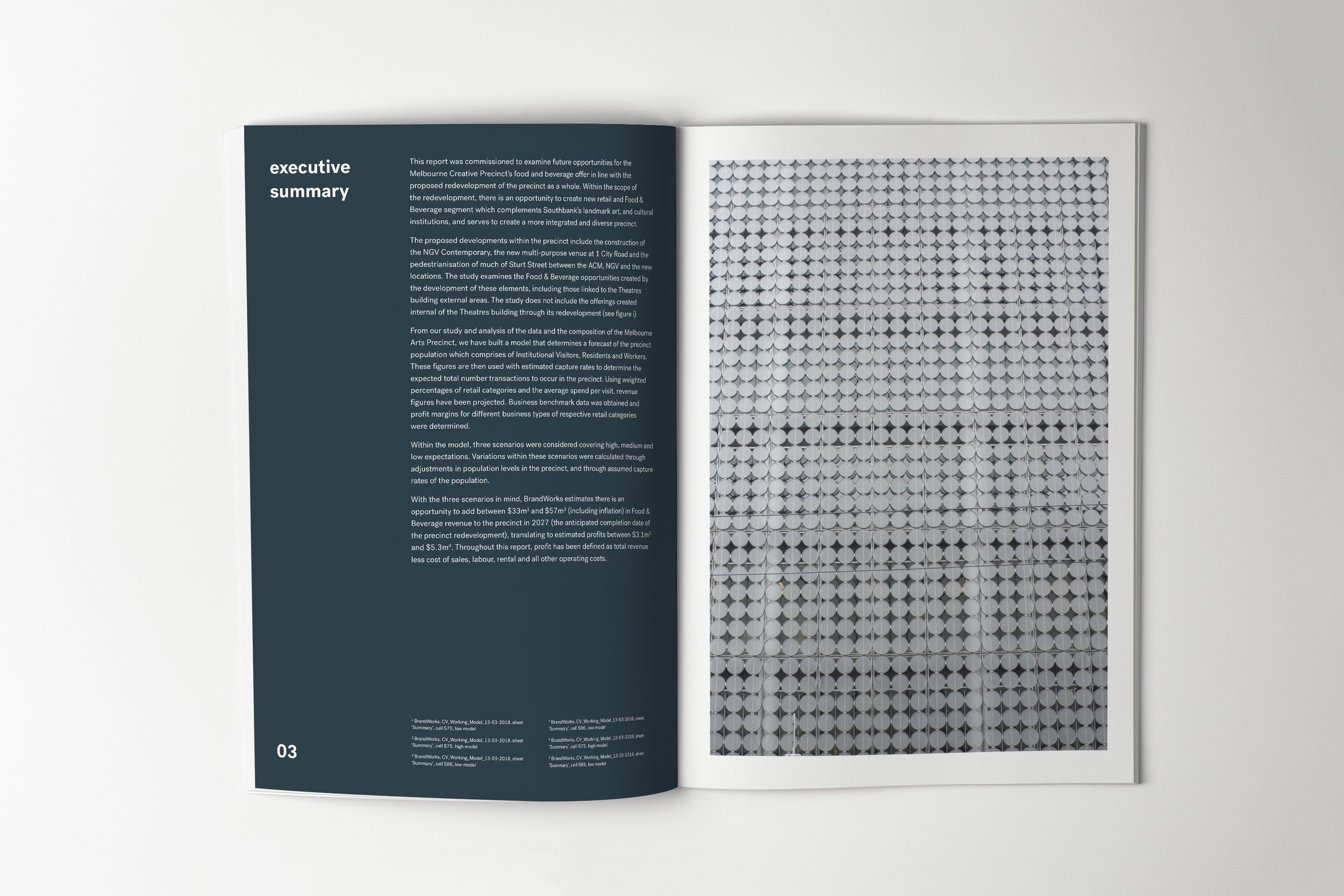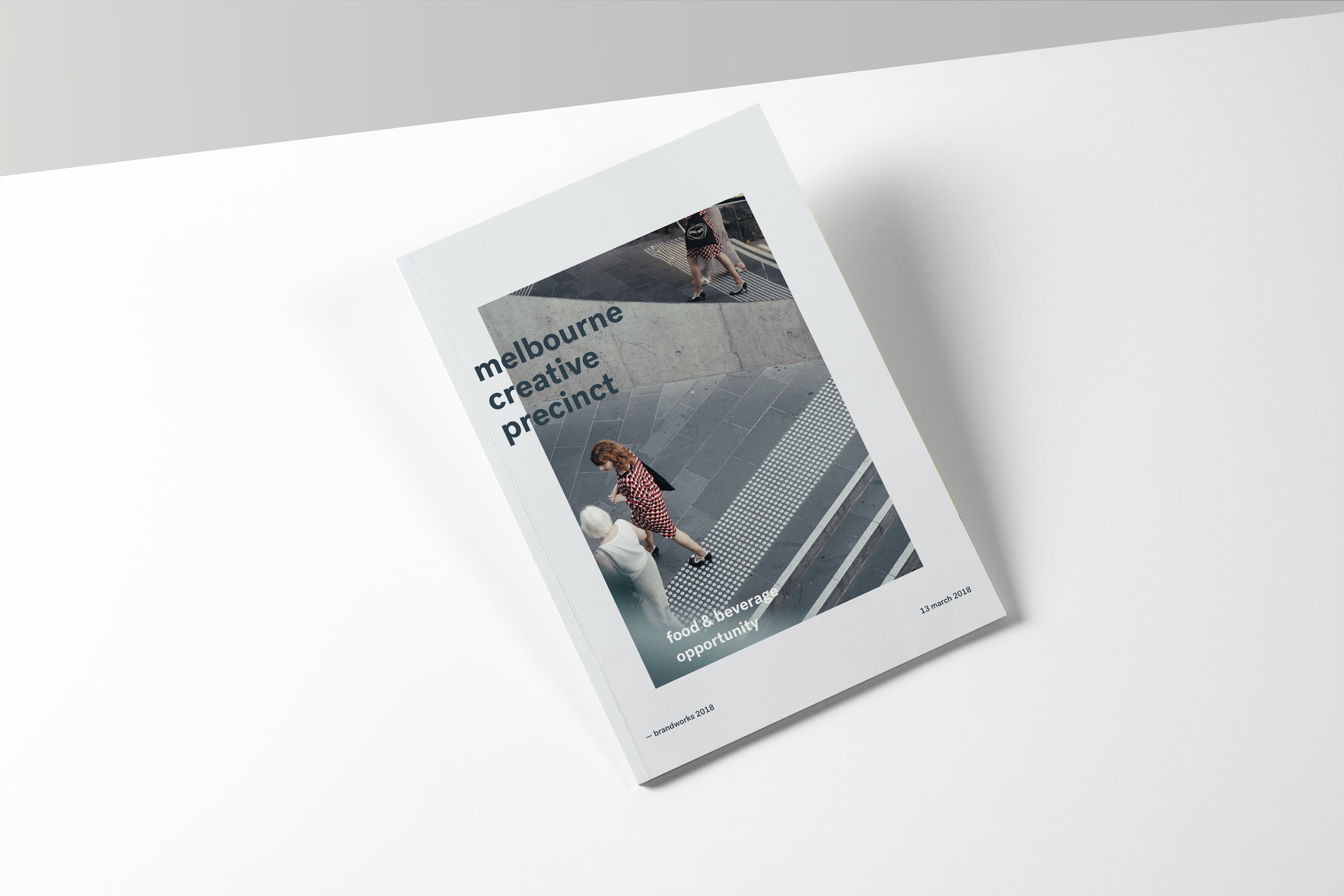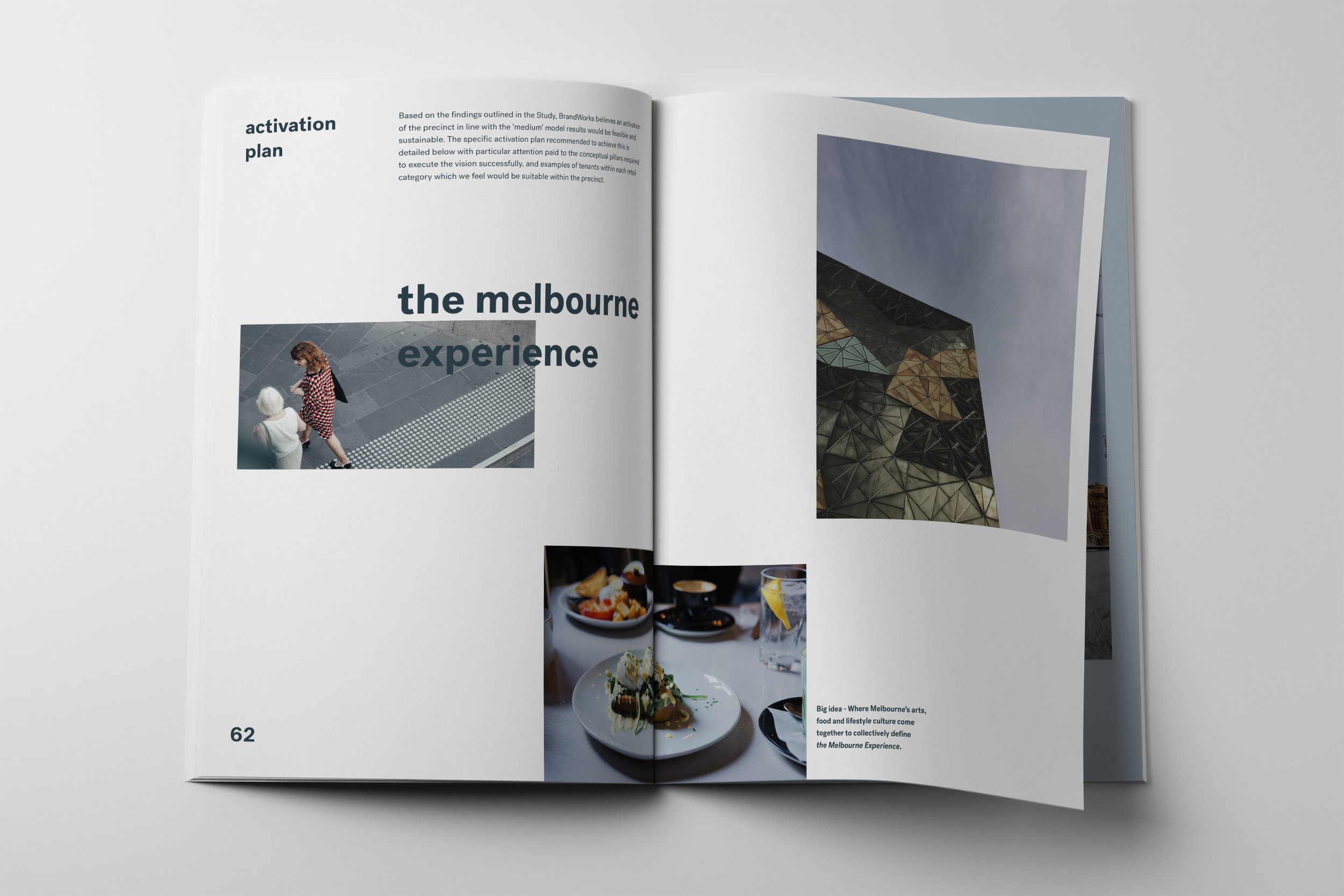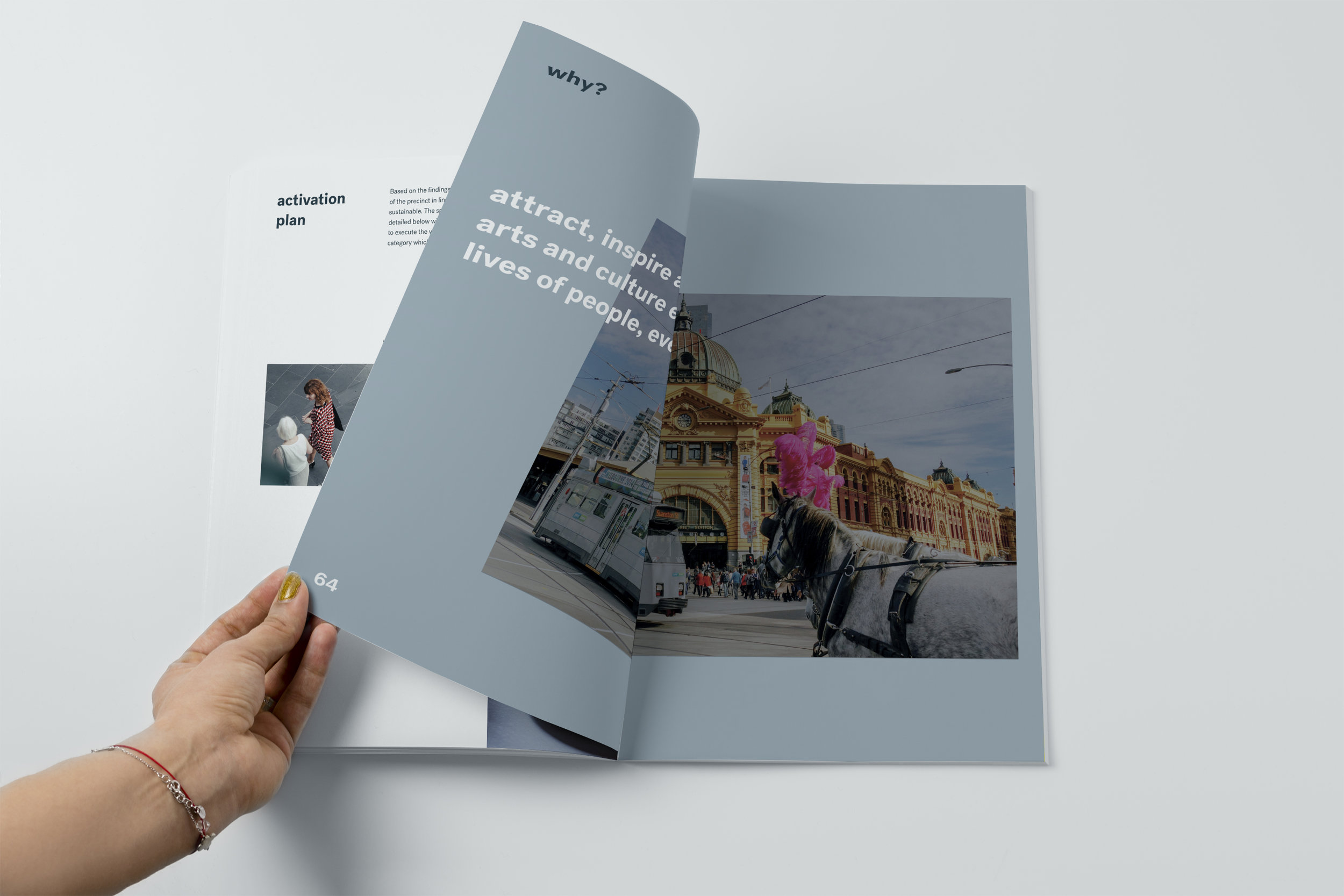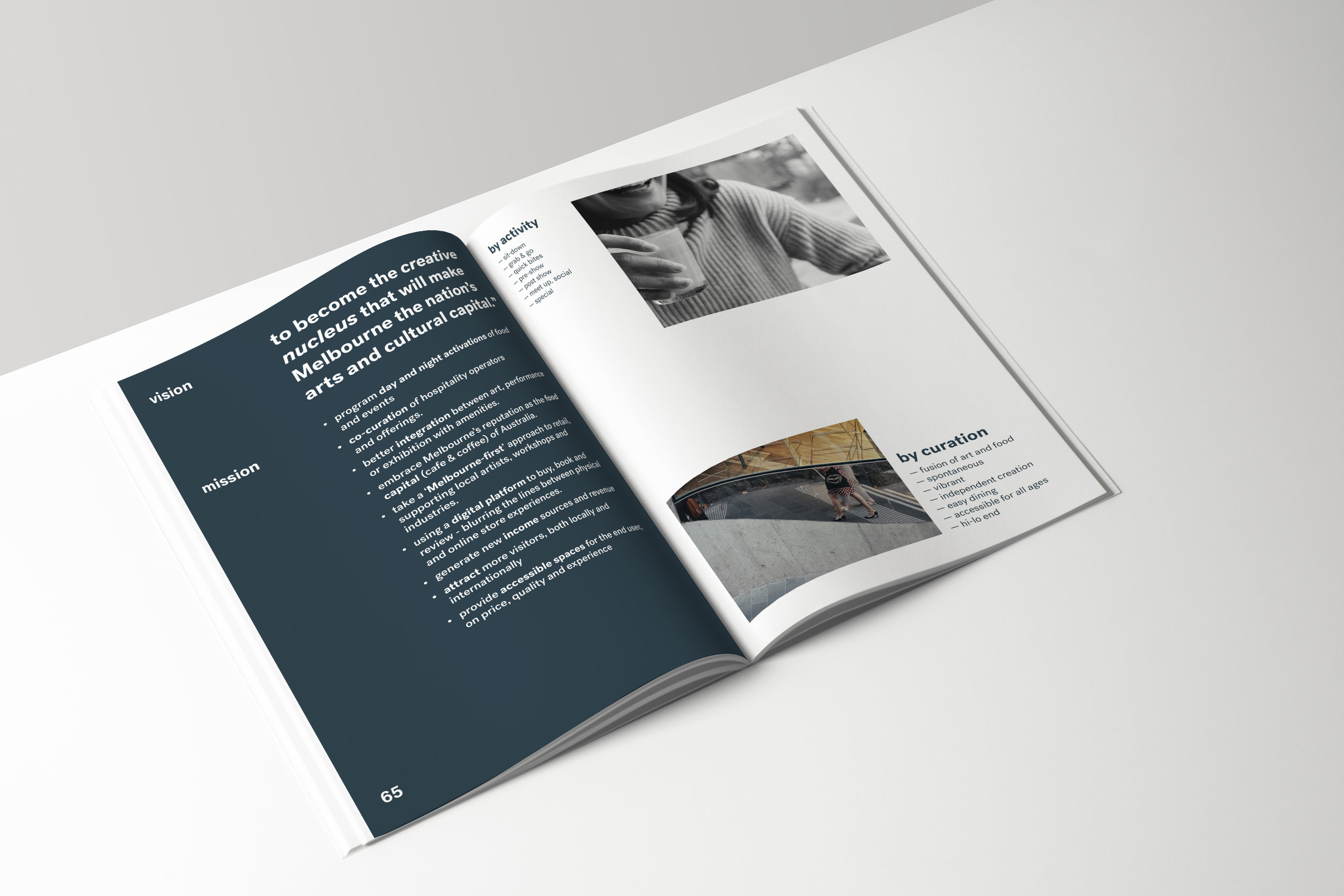creative victoria
The Melbourne Arts Precinct has one of the highest concentrations of arts, cultural and creative organisations anywhere in the world – and presents up to 3000 performances and exhibitions every year.
— The Client
Development Victoria, in partnership with Creative Victoria and the Department of Economic Development, Jobs, Transport and Resources (DEDJTR) are working on a 10-year, billion-dollar redevelopment masterplan for the Melbourne Arts Precinct. This project will see the most significant changes to the precinct since the completion of Arts Centre Melbourne in 1984. It will include the construction of an entirely new gallery in the NGV contemporary, a subterranean entrance atrium for the ACM and the creation of a new public precinct through the pedestrianisation of Sturt Street.
— The Brief
As one part of the overall masterplan for the redevelopment, BrandWorks was engaged to complete a F&B and Retail Opportunity Study of the Arts Precinct to help make the economic case for the proposal.
— Our Approach
We commenced this project with a thorough research and data-collection phase. This included workshops, site walk-throughs, surveys, interviews with key stakeholders and reviewing previous annual reports.
Once all the raw data was assembled, we had to determine the correct metrics to generate useful outcomes and data for the client. We constructed a dynamic model which used all the information we had gathered as the input and from there applied various multipliers and projections to it to come up with recommendations for future visitor numbers, tenancies and revenues which could be supported as well as rental amounts. This model was developed in a continuous feedback loop with Development Victoria and whenever assumptions or calculations were made, the result was always cross-checked against available data to ensure values were realistic.
The primary challenge for this project was the number of stakeholders and data points. There are at least a dozen interested parties involved in the redevelopment project including the NGV, ACM, Melbourne University as well as smaller organisations such as the Melbourne Recital Centre, ACCA and the Malthouse Theatre. Meetings and presentations would often include representatives from a number of these institutions.
Ensuring that we took the time to discuss the project with everyone and get their input was crucial to making sure everyone felt like they had been heard.
The additional challenge this presented is the sheer amount of data it allowed us to access from the different stakeholders. We had to carefully analyse everything presented to us to make sure the information was accurate and relevant to our calculations and wouldn’t lead us to a misleading outcome.
This issue was mitigated through our dynamic model and feedback loop which allowed us to test theories based on available data and re-evaluate our thinking if the outcome was inaccurate or incorrect.
— Challenges
— Outcomes
Working dynamic feasibility model
70-page final report detailing the process and outcomes of the study, including a concise executive summary.
Interview by a Gateway Evaluation Panel to discuss and critique the findings of the report
The report formed part of Development Victoria’s overall proposal to the Victorian Government for the redevelopment plan. The plan was approved and publicly announced in June 2018. The estimated completion date is 2026.

